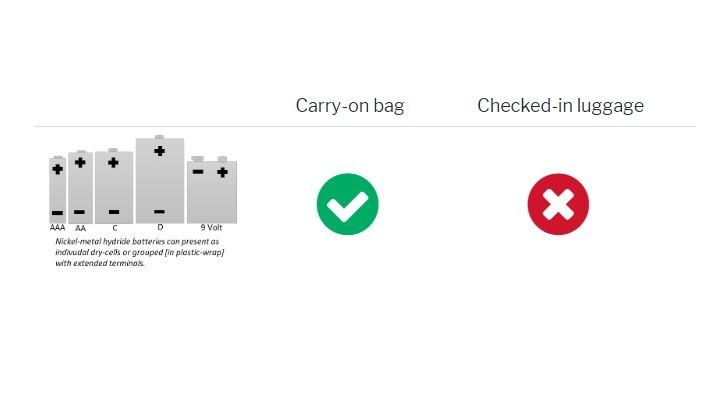
A new law banning batteries from being packed in checked-in luggage will come into effect on January 1.
The new restrictions are due to changes made to the International Air Transport Association (IATA) dangerous goods regulations.
The changes apply to all loose or spare batteries, including batteries in their original retail packaging.
Travellers who need to take batteries with them on their journey are advised to put them in their carry-on baggage instead.
Passengers may take up to 20 loose or spare batteries of any type (including AAA, AA, C cell, D cell and 9-Volt) in carry-on baggage, however airlines can approve a larger number of batteries to be carried.
Loose or spare batteries in carry-on luggage must be protected by being in their original retail packaging, or an individual bag or protective pouch for each battery, or with tape placed over exposed terminals.

What happens if I have batteries in my checked-in baggage?
Aviation security staff x-ray all bags before they're loaded onto planes to make sure there is nothing dangerous in them. If something comes up on the x-ray that needs checking, such as any batteries, the bag will be opened, searched and any dangerous or prohibited item will be removed and can not be retrieved.
Batteries that power any device such as mobile phones and medical devices can go in checked-in baggage, but only if they are inside the device, and the device is turned off.
Spare batteries will however be banned. The restriction on lithium batteries will remain in place, these are also banned from being packed into checked-in baggage.
That means no spare batteries, of any type, will be allowed in checked-in baggage.
Passengers who are not sure what they can take on the plane or pack in their baggage, can check the Civil Aviation Authority (CAA) website or check with their airline.
The CAA also says travellers should check batteries for damage and corrosion before travelling.
